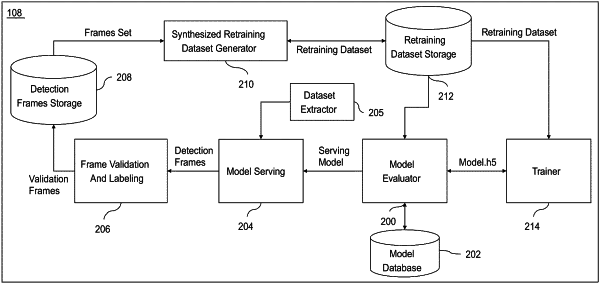| CPC G06N 3/08 (2013.01) [G06N 3/045 (2023.01)] | 20 Claims |

|
1. A system for training a new machine learning model, the system comprising:
at least one hardware processor; and
a memory that stores computer-executable instructions configured to cause at least one hardware processor to perform operations comprising:
loading a reference machine learning model and a first tensor that is associated with the reference machine learning model;
obtaining a plurality of second tensors;
generating, based on the plurality of second tensors, a plurality of feature metrics for a plurality of features;
for each corresponding one of the plurality of second tensors, calculating, based on based on one or more of the generated plurality of feature metrics, a tensor similarity metric between the corresponding one of the plurality of second tensors and the first tensor;
generating a plurality of weighted tensor metrics that are based on the tensor similarity metric(s) that have been calculated;
training a neural network based at least in part on the plurality of weighted tensor metrics associated with the plurality of second tensors;
generating a synthetized tensor based on blending, by using the trained neural network, different features from different ones of the plurality of second tensors; and
training a new machine learning model based on the synthetized tensor that has been generated from the trained neural network.
|